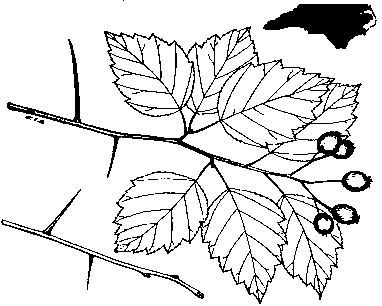|
The
Hawthorns
(Crataegus
L.)
|
|
| |
 |
|
| |
Hawthorns,
or thornapples, represent many different species and varieties
distributed over the state. Even experts have difficulty in distinguishing
between the many species of hawthorns. The various species are
all shrubs or small trees that grow throughout the state, from
the low swamps and river bottoms of the east to the high mountain
ridges of the west. Most hawthorns have long, straight thorns
and bear white blossoms and red or yellow fruit. Some species
are planted as ornamental trees, but otherwise the group has little
commercial value. The bark generally is thin and gray. On the
old stems, it breaks up into thin, narrow scales.
Hawthorn leaves are simple, alternate, mostly oval or wedge shaped,
notched on the edges and are usually from 2 to 3 inches long.
Hawthorn flowers are white. Some have a pleasant scent, and others
have a slightly unpleasant odor. They appear in early spring.
The fruit varies from globular to oblong, from 1/4 to 3/4 inch
in diameter. Some have a pulpy, sweet, edible flesh that surrounds
from one to five bony seeds. The fruit of most hawthorn species
ripens in the fall, and one or two varieties yield a fruit that
is prized for making jelly.
The wood is strong, tough, heavy and hard but rarely is used for
any purpose. Many species of birds are attracted to these trees
and bushes, largely because of the fruit and the protection offered
for nesting. |
|
|

